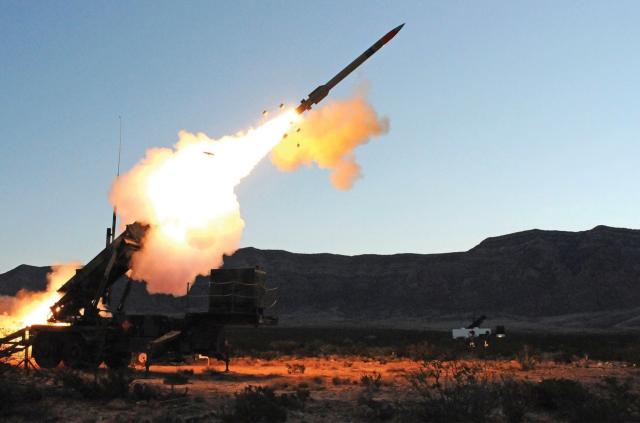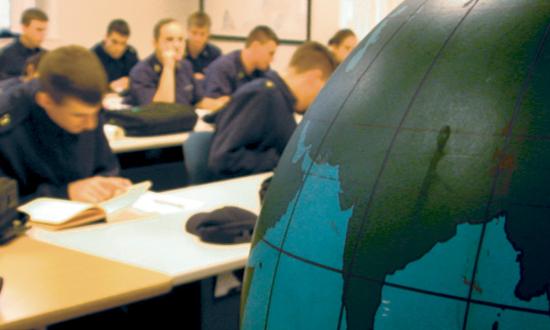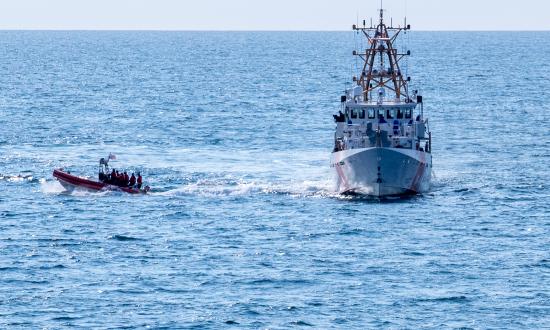In the new era of great power competition between the United States and China, the Marine Corps has embarked on an effort to reshape its force into an enabler of the Navy’s concept of distributed maritime operations. Operating in a contested environment, however, takes the Marine Corps back to a form of warfare at which it struggled in World War II. At stake is the Marine littoral regiment (MLR), a unit designed to be light and mobile but intended to operate within range of a high-end war-fighting adversary.
The last time the Marine Corps had a deployed force so potentially overmatched by an adversary, beyond the effective support of other joint, allied, and coalition forces, was at the 1941 Battle of Wake Island. U.S. naval and air forces were unable to relieve the 1st Defense Battalion, which had to rely on its coastal defense guns, antiaircraft guns, and a dozen Wildcat fighters to oppose Japan’s naval and air forces. The garrison held out for 15 days before its surrender.
In a peer fight today, the Marine Corps will face an adversary with land-attack missiles and high-end fighters. Against these capabilities, a Marine littoral regiment as described in Force Design 2030 cannot succeed in expeditionary advanced base operations (EABO) without the support of the Army, Navy, and Air Force.
Consider, for example, air defense. The MLR’s littoral antiair battalion does not have Patriot missiles and is limited to short-range air-defense systems. The Marine Corps’ lack of investment in air defense and its continued investment in the short-legged F-35B mean expeditionary Marines will need to rely more on the Army’s high and medium air defenses and Air Force aircraft.1
However, EABO has remained a primarily Marine Corps concept carried out by Marines. In addition, the service’s “go it alone” mind-set has been met with similar stovepiped service-oriented Army and Air Force concepts. The Army Multi-Domain Transformation, for example, describes operating small, mobile units much like those outlined in Force Design 2030 and EABO.
EABO needs to be part of the theater combined force land component commander’s (CFLCC’s) overall campaign, with the lighter and more mobile Marine landing force part of a joint force augmented by the Army and Air Force. Otherwise, the Army capabilities the Marine Corps would need likely are going to be employed elsewhere by the Army-led CFLCC.
By operating as lightly as described in Force Design 2030 in range of China’s naval and air forces, the Marine Corps risks repeating the calamitous operations from World War II. If it is too light, it could be overwhelmed like the besieged Marine Corps forces on Wake Island. If it does not have a plan to supplement its forces immediately, it could find itself in a protracted fight like the six-month battle for Guadalcanal.
Renewed great power competition has spurred various new military operating concepts. The Navy’s distributed maritime operations was followed by the Marine Corps’ Force Design 2030 and EABO and has since led to Army Multi-Domain Transformation.2 The convergence of these service-oriented operating concepts is an opportunity for the Marine Corps to lead a truly joint expeditionary force in the Indo-Pacific.
To do so, the Marine Corps must do two things: First, it must ensure EABO aligns with the CFLCC’s plan so Army and Air Force resources are not employed elsewhere. Second, Army and Air Force resources, such as aircraft and air defenses, must be included in EABO planning to ensure they are interoperable with the Marine Corps and transportable by the Navy.








